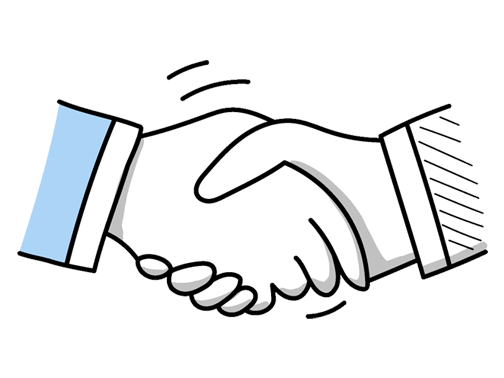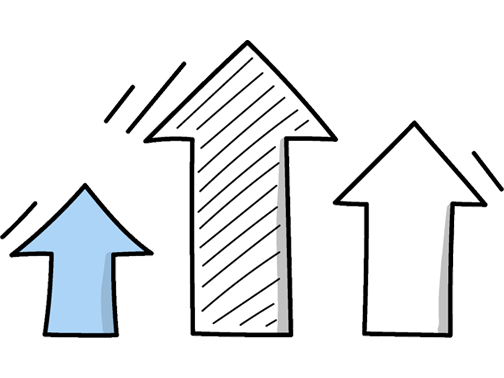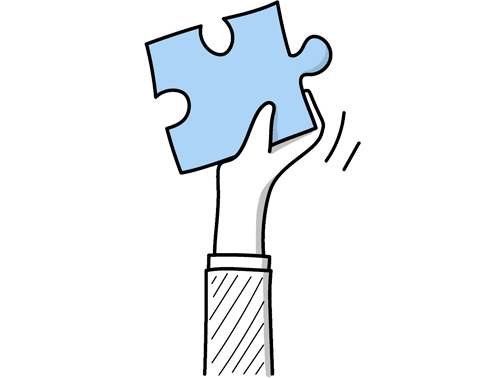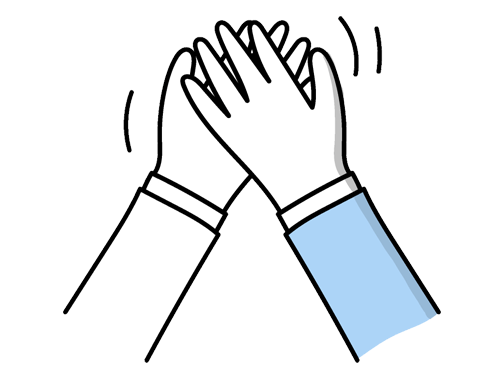Pattern Cutter Interview Questions (2025 Guide)
Find out common Pattern Cutter questions, how to answer, and tips for your next job interview
Practice Interviews Online - Identify your strengths and weakness in a realistic Pattern Cutter mock interview, under 10 minutes
Practice Now »Pattern Cutter Interview Questions
Interviewers ask this to see how you approach problem-solving and innovation in your work. You need to explain a specific challenge you faced with a pattern and describe the creative change you made to enhance its fit, efficiency, or design.
Example: Certainly. While working on a tailored jacket, I noticed the shoulder seam created unnecessary bulk. By slightly adjusting the dart placement and reshaping the sleeve cap, I improved the fit and allowed better movement without compromising the design. This subtle change made the garment more comfortable and elevated its overall appearance, showing how small pattern tweaks can have a big impact.
What they want to know is how you ensure consistency and accuracy in your work over time. You need to say that you keep detailed notes, sketches, and measurements, and organize them clearly to make it easy to replicate or adjust patterns later.
Example: I keep detailed notes at each stage, including measurements, adjustments, and fabric types, often sketching key changes directly on the pattern. I also name and date each version clearly so it’s easy to track progress. For example, when working on a tailored jacket, I recorded specific darts and ease changes, which made reproducing and refining the pattern much smoother later on. This way, the process remains clear for anyone referring back.
What they want to understand is how your careful observation can stop mistakes before they happen, ensuring quality in your work. You need to explain a specific example where your thoroughness caught an error early, preventing a bigger problem down the line.
Example: In a previous role, I noticed a subtle misalignment in a pattern piece that, if overlooked, would have caused fitting issues in production. By flagging it early, I saved time and resources, ensuring the final garment met quality standards. Paying close attention to these details helps prevent costly errors and maintains the integrity of the design throughout the manufacturing process.
Hiring managers ask this to understand your experience scope and relevance to their needs. You need to clearly state the garment types you’ve worked on most often and highlight any specialization or versatility you have.
Example: I’ve mostly worked on tailored pieces like jackets and coats, where precision is key. I also have experience with dresses and trousers, focusing on fit and fabric behavior. Working across both casual wear and more structured garments has helped me adapt techniques to suit different styles and materials, ensuring the final product meets the designer’s vision.
This question is designed to see how you troubleshoot and solve fitting problems, ensuring garments meet quality standards. You need to explain how you identify the cause of the poor fit, make precise adjustments to the pattern or garment, and communicate your solution clearly to the team or client.
Example: If a pattern doesn’t fit as expected, I start by carefully examining both the pattern and the garment to pinpoint where the issue lies—whether it’s the measurements or the shape. Then, I make targeted adjustments to the pattern, sometimes creating a toile to test changes. Throughout, I keep clear communication with the team to ensure everyone’s aligned, which helps in finding the best solution efficiently.
What they want to know is how well you receive and incorporate feedback to improve your patterns while maintaining good communication. You should say you listen carefully, make precise adjustments based on the feedback, and keep a professional, collaborative attitude throughout the process.
Example: I welcome feedback as a chance to refine my work. When designers or clients suggest changes, I listen carefully to understand their vision, then adjust the pattern accordingly. I keep communication clear and open throughout, ensuring we’re aligned. For example, once a designer wanted a sleeve modified last minute, and by discussing the details together, I was able to deliver exactly what they needed without delays.
What they want to know is how you stay flexible and focused under pressure while ensuring accuracy. You need to explain that you quickly assess the impact of the change, prioritize tasks, and communicate clearly with your team to implement the update efficiently.
Example: When last-minute changes come up, I stay calm and focus on understanding the new requirements clearly. I quickly adjust the pattern, keeping in close contact with the design and production teams to ensure nothing is missed. Once, we had a fabric switch just before production, and by staying flexible and communicating well, I managed to revise the pattern smoothly without delaying the schedule. It's all about being adaptable and precise under pressure.
Hiring managers ask this question to see how you maintain accuracy and quality in your work, which is crucial for a successful garment fit. You should explain that you carefully double-check all measurements against specifications, keep your workspace organized to avoid mistakes, and use feedback from fit samples to make precise adjustments.
Example: To ensure precision, I start by carefully reviewing measurements and comparing them with the design specs before cutting. I like to work in a quiet space to stay focused and avoid mistakes. If I spot anything off, I pause and reassess rather than rushing ahead. I also value feedback from colleagues and use it to refine patterns, which has helped me consistently deliver accurate and well-fitting pieces.
What they want to know is if you can handle pressure and stay organized while working quickly. You need to say that you efficiently manage multiple tasks under tight deadlines, communicate well with design and production teams, and adapt smoothly to changing priorities without losing accuracy.
Example: In previous roles, I’ve often juggled several projects simultaneously while meeting tight deadlines. Staying in close contact with designers and production ensured smooth handovers and quick adjustments when priorities shifted. For example, during a busy season, I adapted patterns rapidly to last-minute design changes without compromising quality, which kept the workflow moving efficiently and helped the team meet delivery targets on time.
Interviewers ask this to see how you maintain precision and prevent costly mistakes in your work. You need to explain that you double-check measurements with tools like tape measures or digital devices and ensure accuracy by working carefully in good lighting to avoid errors.
Example: To ensure accuracy, I rely on quality tools like flexible tape measures and clear rulers, always checking measurements twice to avoid errors. I take my time to stay focused, especially with complex patterns, and use notches or tailor's chalk to mark key points clearly. This careful approach helps me maintain precision throughout the process and delivers patterns that fit perfectly.
This interview question helps employers understand how you ensure precision and quality in your pattern cutting work. You should explain that you systematically cross-check measurements against specifications, use calibrated tools for accuracy, and seek peer reviews to catch any errors before finalizing patterns.
Example: I always start by carefully checking measurements against the original specifications, then test the pattern on a sample fabric to spot any fitting issues early. I find it helpful to take short breaks before a final review, as fresh eyes catch details I might miss initially. I also welcome feedback from colleagues, as a second opinion often highlights areas for improvement I hadn’t considered.
Interviewers ask this to see how you bridge the gap between technical and non-technical colleagues. You should explain that you use simple language and visual aids to make complex ideas easy to understand.
Example: When working with non-technical team members, I focus on keeping things straightforward and visual. I use simple language and often bring sketches or samples to demonstrate ideas. It helps to encourage questions and check understanding as we go along. For example, explaining a pattern adjustment by showing a fabric swatch makes it easier for everyone to grasp the changes needed without confusion.
Questions like this assess your ability to teach and lead others, which is crucial for maintaining quality and consistency in pattern cutting. You should explain how you methodically guided juniors through techniques, addressed their individual challenges, and helped them improve their skills effectively.
Example: Yes, I’ve guided junior pattern cutters by focusing on hands-on learning combined with clear feedback. I remember working with one who struggled with complex grading; we broke down the process into smaller steps and reviewed each stage together. Over time, their confidence and precision improved noticeably, which helped the whole team meet deadlines more efficiently. It’s rewarding to see that growth through practical support and patience.
Questions like this assess your problem-solving skills and how you handle complex tasks under pressure. You need to clearly describe the challenge, explain the steps you took to resolve it, and emphasize the successful outcome or what you learned.
Example: In a previous role, I worked on a complex design with intricate fabric draping that initially didn’t fit the pattern well. I revisited measurements, adjusted the blocks, and collaborated closely with the designer to tweak the layout. This hands-on approach helped us achieve the desired silhouette without compromising fabric integrity. It was a great reminder of the importance of patience and clear communication in tackling tough projects.
This interview question helps the interviewer see how you use clear communication to solve problems and ensure teamwork succeeds. You need to explain a specific time when sharing information clearly led to better results in a project, showing your role in improving outcomes through communication.
Example: In a previous role, I noticed some confusion between the design and production teams over pattern details. I arranged a quick meeting to clarify measurements and fabric choices, which helped align everyone’s expectations. This open communication prevented costly errors and ensured the final garments matched the original vision, improving both efficiency and quality. It showed me how clear dialogue can really keep a project on track.
This question checks your attention to detail and organizational skills, crucial for producing accurate and reliable patterns. You need to explain that you follow standardized measurements, use consistent tools, and regularly review your work to ensure uniformity across all projects.
Example: To keep patterns consistent across projects, I rely on detailed notes and standardized templates. I also cross-check measurements and previous designs regularly to ensure alignment. For example, when working on a seasonal collection, I compare each pattern to the core pieces, making subtle adjustments without losing the original fit. Clear communication with the team helps catch any discrepancies early on, so the final product feels cohesive throughout.
Questions like this assess your ability to clearly convey detailed information so your team can execute tasks accurately. In your answer, explain that you simplify complex instructions by breaking them down step-by-step, use clear and precise technical terms, and encourage questions to ensure understanding.
Example: When sharing detailed pattern instructions, I focus on breaking down the steps into straightforward terms, making sure everyone follows along. I welcome questions to clear up any confusion and listen carefully to feedback. Using the right technical terms where needed helps keep things precise. For example, when working on a complex garment last season, this approach helped the team produce accurate cuts quickly and confidently.
Interviewers ask this to see how you approach transforming a creative design into a practical, wearable pattern. You need to explain that you carefully analyze the sketch for key details, take accurate measurements to draft the pattern, and create prototypes to test and refine the fit and design.
Example: When I receive a designer’s sketch, I start by studying the details closely—silhouette, seams, and style lines. I take precise measurements, then draft the initial pattern pieces to reflect those shapes. From there, I create a muslin sample to check the fit and proportions, making adjustments where needed. This hands-on testing helps ensure the final garment matches the designer’s vision while fitting perfectly.
Hiring managers ask this to ensure you can work efficiently with modern tools that enhance accuracy and speed in pattern making. In your answer, name the key software you know, like Gerber AccuMark, and explain how it helps reduce errors and streamline your workflow.
Example: I’m comfortable using industry-standard tools like Gerber AccuMark and Lectra, which really help streamline the pattern-making process and reduce errors. I’ve also worked with CLO 3D for virtual sampling, which speeds up fitting adjustments. I’m quick to pick up new software as needed, ensuring that my technical skills always support efficient and accurate pattern development.
Employers ask this to see if you understand the technical precision required in pattern making and how you ensure garments fit correctly after sewing. You need to say that you always add seam allowances based on fabric type and garment design, considering ease for sewing and final fit.
Example: When drafting patterns, I always plan seam allowances based on the garment’s fabric and construction method. For example, for woven fabrics, I usually add 1.5cm for seams to allow enough room for stitching and adjustments. I make sure allowances are consistent and clearly marked so the cutter and sewer can work smoothly, which helps maintain the design’s fit and shape through production.
Questions like this assess your teamwork and communication skills, which are crucial for translating design ideas into precise patterns. You need to explain how you worked closely with designers and team members to ensure the final product meets the vision and quality standards.
Example: In my previous roles, I’ve worked closely with designers to understand their vision and translate it into precise patterns. We often brainstorm together to solve fit or construction challenges, ensuring the final garment meets expectations. I also stay in regular contact with the production team to keep everyone aligned and troubleshoot any issues early, which helps the process run smoothly from concept to finished product.
This question aims to assess your knowledge of how different fabric properties influence pattern adjustments and your ability to apply appropriate techniques. You need to explain how you consider fabric stretch or thickness when altering patterns, mention methods like grading or slash-and-spread, and share examples where these adjustments improved the garment’s fit or quality.
Example: When working with different fabrics, I always consider stretch, drape, and thickness. For example, with stretch fabrics, I reduce ease to prevent sagging, while with stiff fabrics, I add extra room for movement. Once, adjusting a wool pattern helped improve fit and reduced bulk in the seams, making the garment more comfortable. It’s about tailoring the pattern to the fabric’s behaviour to ensure the final piece looks and feels right.
Questions like this assess your attention to detail and problem-solving skills in ensuring garment quality. You need to explain that you carefully compare both sides of the pattern, check measurements and grainlines, and adjust or redraw areas that don’t match to maintain symmetry.
Example: When I notice symmetry issues, I start by carefully comparing both sides of the pattern against each other and the original design. I check the grain lines and seam allowances to ensure everything aligns properly. Sometimes, slight adjustments in the tracing paper help. For example, once I found one sleeve was slightly larger, so I redrew that side, matching it perfectly to fix the imbalance. It’s all about patience and attention to detail.
This interview question is asked to assess your attention to detail and understanding of size grading principles to maintain garment fit and consistency. You need to explain that you carefully follow grading rules and measurements, double-check calculations, and use tools or software to ensure precision across all sizes.
Example: To ensure accuracy when grading patterns, I always start by thoroughly reviewing the base size and the grading rules specific to the brand. I use precise measurements and double-check each step as I go. For example, when I graded a summer dress range, I relied on consistent increments and compared the pieces side by side to maintain fit and proportion across sizes. It’s about attention to detail and trusting your process.
Interviewers ask this question to see how you approach challenges and apply your technical skills in real situations. You need to explain the specific problem, your thought process, and the clear steps you took to find an effective solution.
Example: In a previous role, I encountered a challenging fabric with unusual stretch that distorted the pattern when cut. To tackle this, I adjusted the grainlines and tested smaller swatches before finalising the pieces. This hands-on approach ensured the garment maintained its shape and fit, avoiding costly mistakes and meeting the client’s expectations. It taught me the importance of adaptability and attention to detail in pattern cutting.
Ace your next Pattern Cutter interview with even more questions and answers
Common Interview Questions To Expect
The interviewer is looking for you to highlight your key skills, abilities, and qualities that make you a strong candidate for the position. Be sure to focus on strengths relevant to the role of a Pattern Cutter.
Example: My biggest strengths as a Pattern Cutter are my attention to detail, my ability to interpret and create patterns accurately, and my strong understanding of garment construction. I also have excellent problem-solving skills and can work well under pressure to meet deadlines. Overall, I believe these strengths make me a valuable asset to any design team.
The interviewer is looking for insight into your long-term aspirations, motivation, and commitment to the industry. Be honest, specific, and show how the role aligns with your goals.
Example: My career goal is to become a senior pattern cutter in a reputable fashion house, where I can contribute my expertise in creating innovative designs. I am motivated by the opportunity to continuously learn and grow in the industry, and I believe this role will help me achieve that goal. Ultimately, I aim to make a significant impact in the fashion world through my work as a pattern cutter.
The interviewer is looking for how you handle constructive criticism, your ability to reflect on feedback, and how you have used criticism to improve your work. You can answer by discussing a specific situation, your reaction, and the outcome.
Example: Sure! One time, a senior designer criticized the fit of a garment I had pattern cut. Instead of getting defensive, I asked for specific feedback and made adjustments to improve the fit. In the end, the garment turned out much better and I learned a valuable lesson in attention to detail.
The interviewer is looking for examples of how you manage stress and stay focused under pressure. Be sure to provide specific examples of your coping mechanisms and problem-solving skills.
Example: I handle pressure by staying organized and prioritizing tasks. I also take short breaks to clear my mind and refocus when things get overwhelming. Lastly, I communicate with my team to delegate tasks and work together to meet deadlines.
The interviewer is looking for questions that show interest in the company, the role, and how you can contribute. Ask about company culture, team dynamics, and future projects.
Example: Yes, I was wondering about the team dynamics in the pattern cutting department. How do you typically collaborate on projects? Also, could you tell me more about any upcoming projects or initiatives the team will be working on? Lastly, I'm curious about the company culture and how employees are supported in their professional development.
Company Research Tips
The company's official website is a goldmine of information. Look for details about the company's history, mission, vision, and values. Pay special attention to any information related to their products, services, and target market. For a Pattern Cutter role, check if they have a specific style or theme they usually follow. This will give you an idea of what they might be looking for in your work.
Tip: Don't just skim through the website. Take notes and try to understand the company's culture and work ethic. Look for any recent news or updates about the company.
Social media platforms can provide a more informal view of the company. Check their posts, comments, and reviews on platforms like LinkedIn, Facebook, Instagram, and Twitter. This can give you insights into their work culture, current projects, and how they interact with their customers and employees. For a Pattern Cutter role, their posts might also give you an idea of their latest designs and trends.
Tip: Look at the comments and reviews to get a sense of public opinion about the company. Also, check out the profiles of employees working there, especially those in similar roles.
Keeping up with industry news and trends can give you a competitive edge. Look for any recent developments in the fashion industry, especially in the UK. This can include new design trends, technological advancements in pattern cutting, and changes in consumer behavior. This will not only show that you are well-informed but also that you are proactive and passionate about your work.
Tip: Use platforms like Google News, industry-specific websites, and magazines. Participate in relevant forums and discussions to get a deeper understanding of the industry.
Understanding the company's competitors can give you insights into the company's position in the market. Look for information about their main competitors, their products, and how they are different from the company you are interviewing with. For a Pattern Cutter role, understanding the design style and trends of competitors can give you a broader perspective of the market.
Tip: Use tools like Google, LinkedIn, and industry-specific databases for your research. Try to understand the strengths and weaknesses of the competitors.
What to wear to an Pattern Cutter interview
- Smart casual attire
- Clean, well-fitted jeans
- Comfortable, polished shoes
- A neat, ironed shirt or blouse
- Light makeup and minimal jewelry
- Avoid overly bright colors
- Carry a portfolio or bag
- Neatly styled or tied back hair
- Avoid strong perfumes or colognes
- Ensure nails are clean and trimmed





